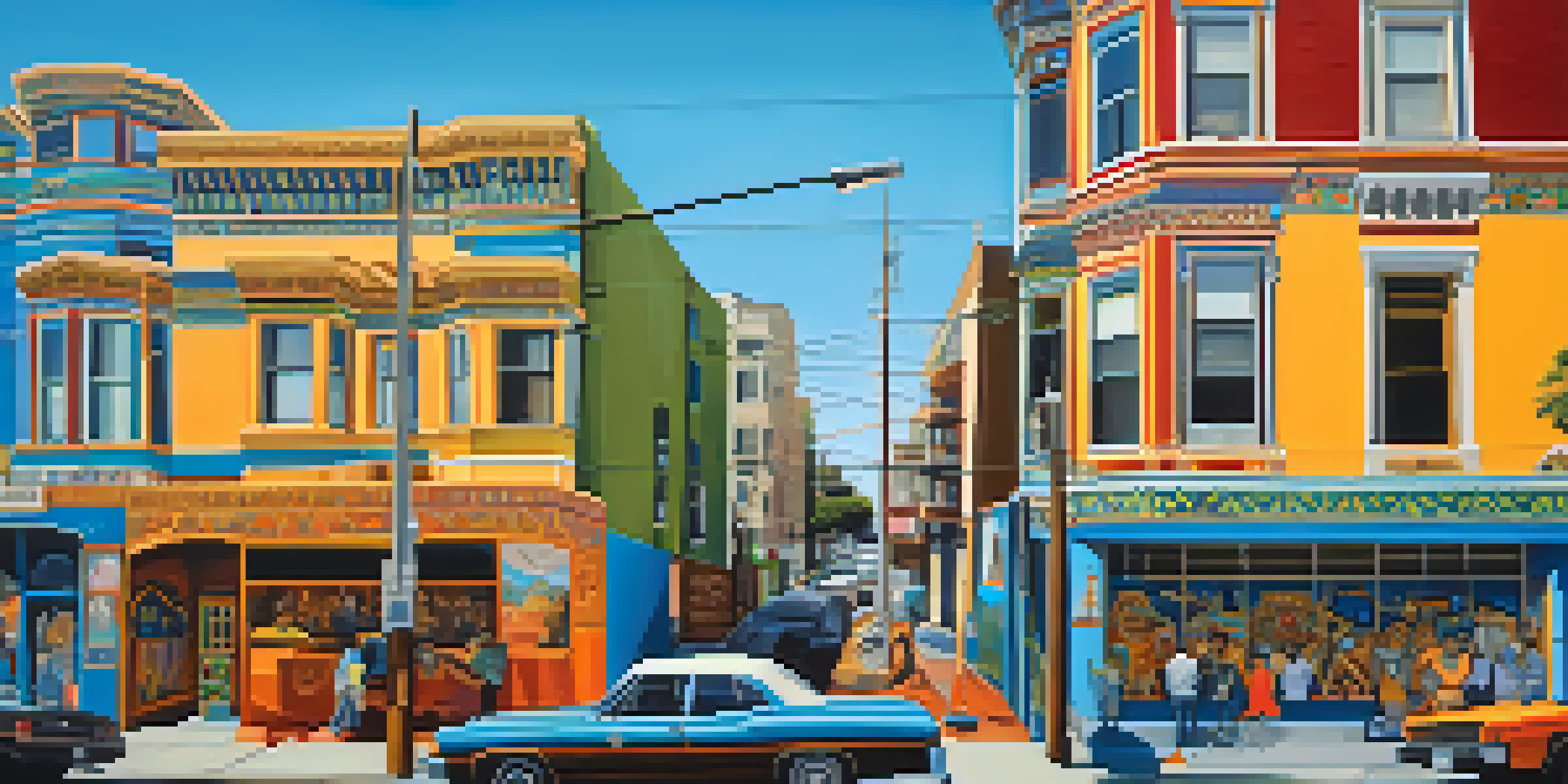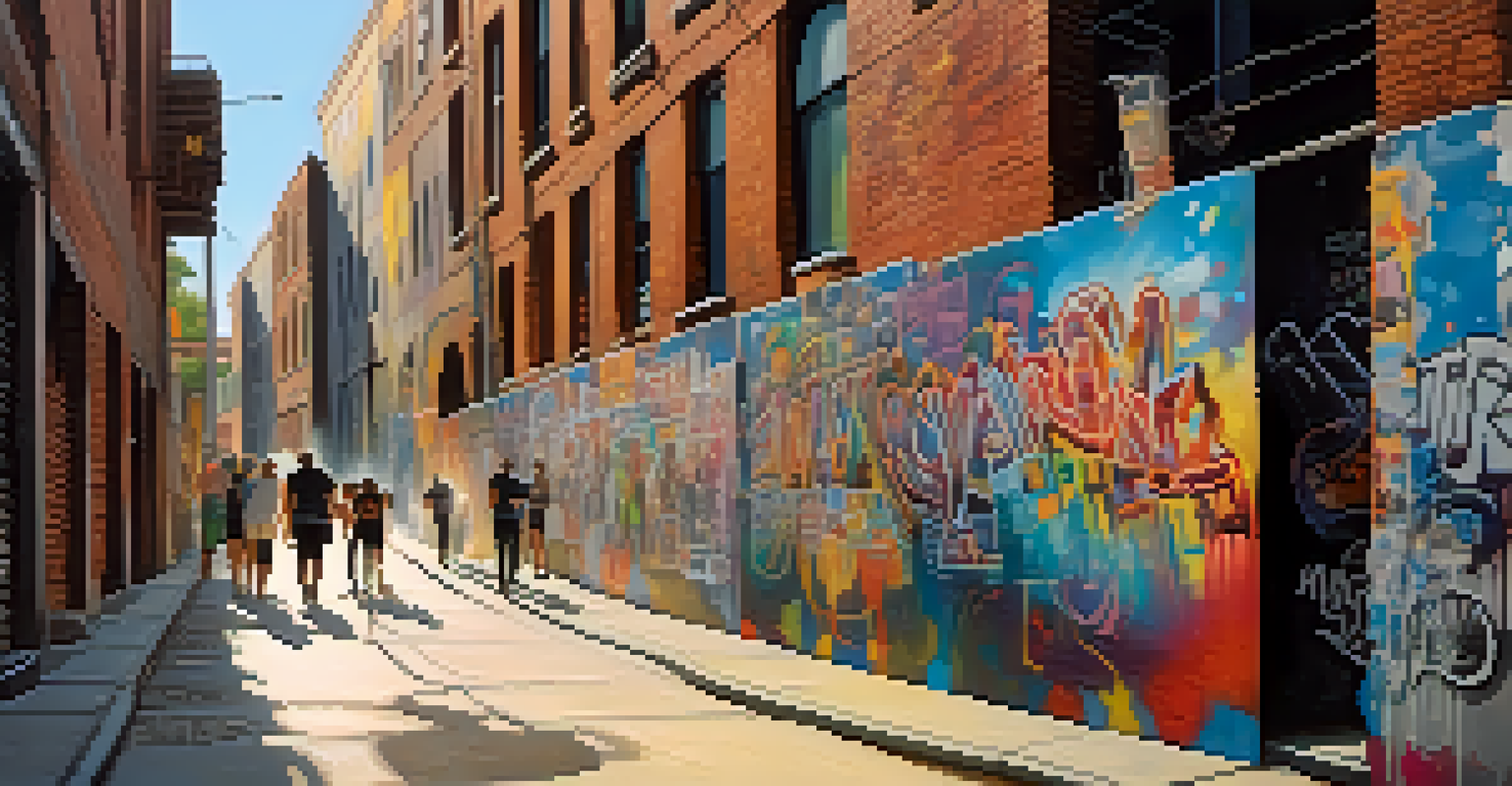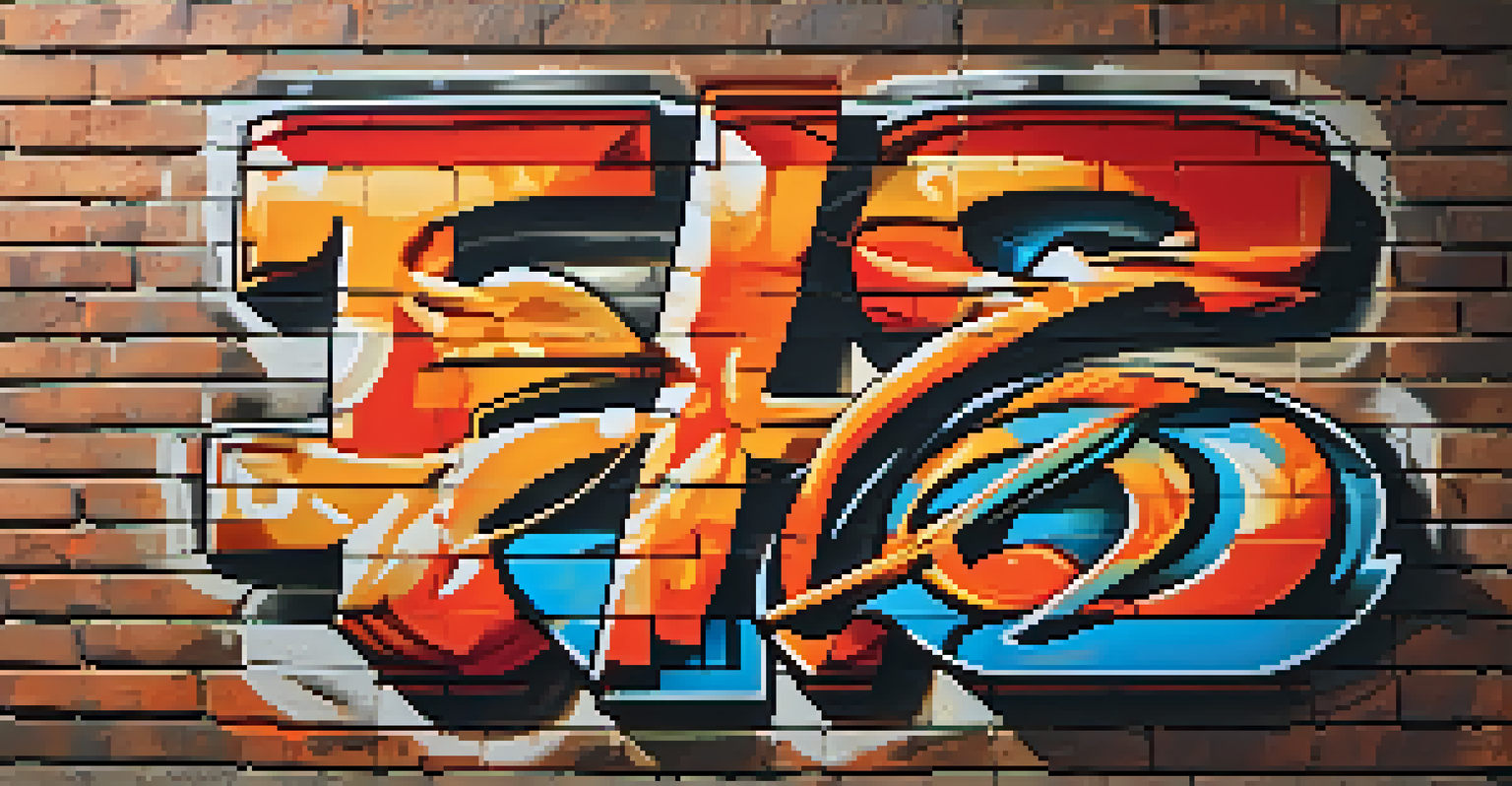Graffiti vs. Street Art: Understanding San Francisco's Scene

Defining Graffiti and Street Art: What's the Difference?
At first glance, graffiti and street art may seem like two peas in a pod, but they're quite different. Graffiti typically refers to tags or signatures scrawled on public spaces, often created quickly and without permission. On the other hand, street art encompasses a broader range of artistic expressions, often characterized by elaborate murals or thought-provoking installations that may engage with the community.
Art is the most beautiful of all lies.
Graffiti is often seen as a form of vandalism, while street art can be viewed as a legitimate art form that beautifies urban landscapes. This distinction is important when considering how both forms are perceived by the public and law enforcement. For instance, while graffiti artists may be viewed as rebels, street artists can gain recognition and even commissions for their work.
In San Francisco, both styles coexist, reflecting the city's vibrant culture and history. Understanding these differences helps us appreciate each art form's role in the urban environment, setting the stage for a deeper exploration of their impact on the local scene.
The Origins of Graffiti in San Francisco: A Historical Perspective
Graffiti has a rich history in San Francisco, dating back to the late 1960s and early 1970s when artists began using the city as their canvas. This movement emerged alongside the rise of hip-hop culture, with graffiti serving as a form of self-expression and social commentary. Initially, it was driven by a desire for visibility and recognition within marginalized communities.

As the years progressed, graffiti evolved into a more complex art form, with skilled artists turning simple tags into intricate pieces that captured attention. Iconic areas like the Mission District became hotspots for this artistic revolution, showcasing colorful murals that tell stories of the neighborhood's culture and struggles.
Graffiti vs. Street Art Defined
Graffiti typically involves unauthorized tags, while street art includes more elaborate works that engage communities.
Today, the historical roots of graffiti in San Francisco are celebrated and recognized, paving the way for conversations about urban art and its significance. This foundation has allowed for the blending of styles that we see in the vibrant street art scene today.
Street Art's Rise in San Francisco: A Cultural Phenomenon
In the last two decades, street art has surged in popularity, transforming the urban landscape of San Francisco. Artists like Banksy and Shepard Fairey have inspired local talents to create works that engage with social and political issues, often conveying powerful messages. This movement is not merely about aesthetics; it's about sparking conversations and fostering connections within the community.
Graffiti is one of the few tools you have if you have almost nothing.
One of the most notable aspects of street art is its accessibility. Unlike traditional gallery exhibitions, street art can be found in public spaces, allowing everyone to experience it without barriers. This democratization of art has encouraged community involvement, with residents often collaborating with artists to reflect their shared values and experiences.
As a result, street art has become a vital part of San Francisco's cultural identity, blending history, art, and activism. This phenomenon showcases how art can transcend boundaries, bringing people together in a city known for its diverse and dynamic spirit.
Legal Issues: The Fine Line Between Art and Vandalism
One of the most contentious aspects of graffiti and street art in San Francisco is the legal framework surrounding these practices. Many graffiti artists operate in a legal gray area, often facing potential charges for vandalism, which can lead to hefty fines or even jail time. This creates a dilemma for artists who seek to express themselves while navigating the risks involved.
Conversely, street art has garnered a more favorable reputation, with some artists receiving permission from property owners to create murals. This shift has led to initiatives that promote street art, allowing artists to work within legal parameters while still making impactful statements. However, this can lead to debates about authenticity, as some purists believe that art created with permission loses its edge.
Legal Challenges for Artists
Graffiti artists often operate in legal gray areas, facing risks of vandalism charges, while street artists may gain permission for their work.
The ongoing discussions about legality and permission highlight the evolving relationship between artists, the community, and the law. As San Francisco continues to grapple with these issues, the lines between graffiti and street art will remain a topic of conversation, reflecting broader societal attitudes toward creative expression.
Iconic Locations for Graffiti and Street Art in San Francisco
San Francisco boasts a plethora of iconic locations that serve as canvases for both graffiti and street art. The Mission District, with its colorful murals, is a must-visit for anyone interested in this vibrant scene. Here, you can find works that celebrate the neighborhood's Latino heritage, social justice issues, and local culture, making it a living gallery.
Another hotspot is the famous Clarion Alley, known for its ever-changing murals that reflect the community's thoughts and feelings. This alleyway has become a symbol of artistic collaboration, where local artists come together to create thought-provoking pieces that challenge viewers to reflect on their surroundings.
Exploring these locations not only offers a visual feast but also provides insight into the stories behind the art. Each mural and tag carries its own narrative, making San Francisco a rich tapestry of artistic expression waiting to be discovered.
The Role of Technology in Shaping Urban Art
In today's digital age, technology plays a significant role in the evolution of graffiti and street art. Social media platforms like Instagram have allowed artists to showcase their work to a global audience, amplifying their reach and influence. This has led to a new wave of artists who gain recognition not only for their physical pieces but also for their online presence.
Moreover, technology has introduced new tools and mediums for urban artists. Spray paint, stencils, and even augmented reality have expanded the possibilities for creative expression. Artists can now experiment with techniques that were previously unavailable, pushing the boundaries of what street art can be.
Technology Transforms Urban Art
Digital platforms and tools have expanded the reach and techniques available to urban artists, reshaping the landscape of graffiti and street art.
However, this shift also raises questions about authenticity and the commercialization of street art. As it becomes more accessible online, some worry that the original spirit of underground art may be diluted. Nevertheless, technology continues to shape the landscape of urban art, making it an exciting time for both artists and enthusiasts.
The Future of Graffiti and Street Art in San Francisco
As we look to the future, graffiti and street art in San Francisco will likely continue to evolve and adapt. With ongoing discussions about gentrification and urban development, artists will find new ways to respond to the changing landscape. This adaptability is a hallmark of the urban art scene, ensuring its relevance in a constantly shifting environment.
Moreover, the rise of community-driven projects and initiatives indicates a promising future for street art. As residents and local organizations collaborate with artists, there is potential for creating spaces that celebrate diverse voices and experiences. This collaboration can lead to more inclusive representations of the community, enriching the cultural fabric of the city.

Ultimately, the future of graffiti and street art in San Francisco will depend on the delicate balance between artistic expression and community engagement. As the city continues to embrace its creative spirit, we can expect to see new and exciting developments in this dynamic art scene.